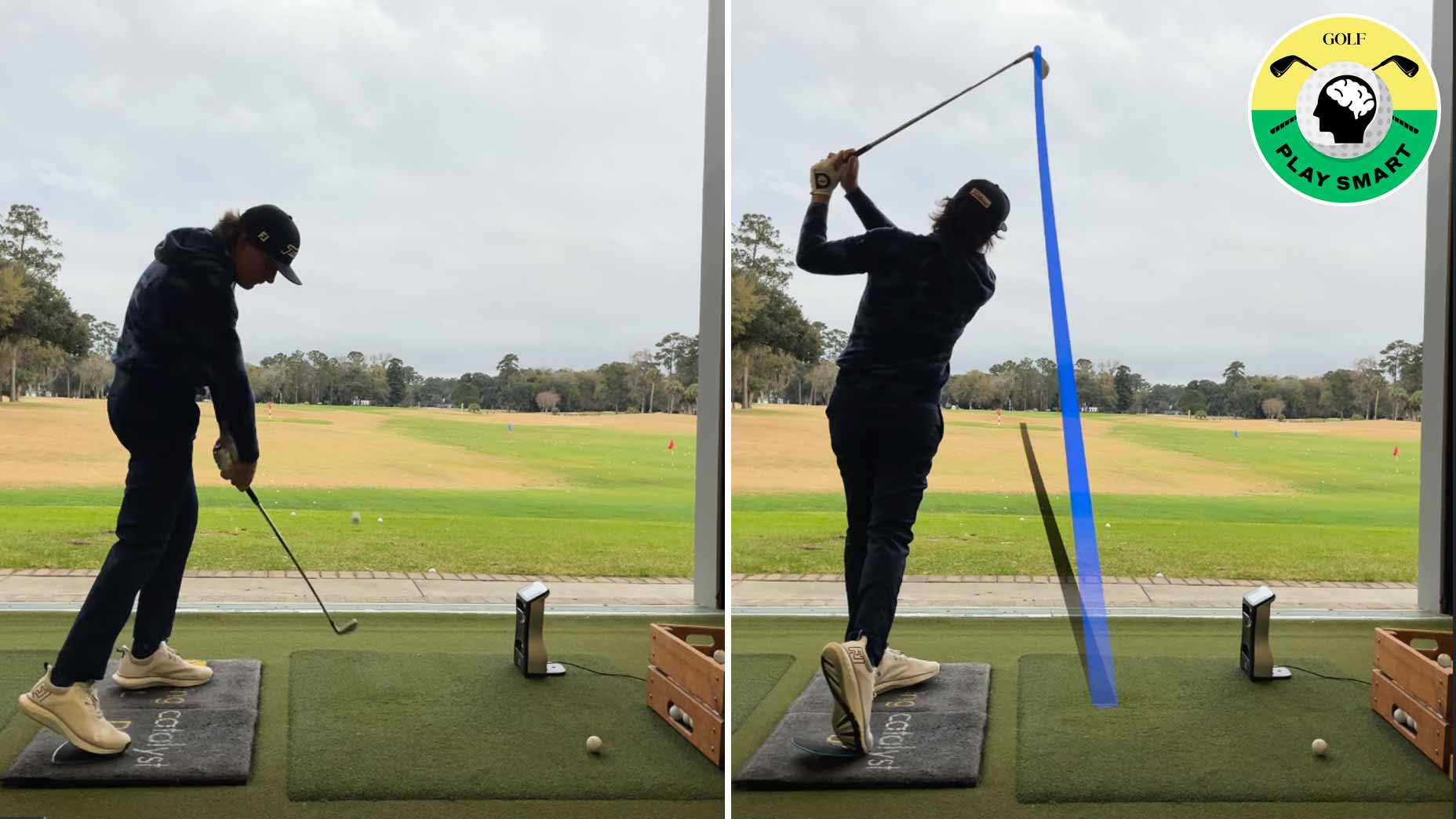During my time in quarantine, I had the opportunity to re-read some of the the game’s most influential books, and my favorite is Golf My Way by the GOAT himself, Jack Nicklaus.
The chapter that I feel is most important for the average golfer is about the head’s relationship with the body and the ball. Nicklaus stressed keeping a steady head to help with ball contact, balance, and the player’s ability to see the ball.
Nicklaus writes that head movement — up and down, side to side, back and forth — creates a golf swing motion that is very difficult to repeat. This is especially true for players who are trying to create more speed to hit the ball farther. Sound like any of you?
Speed and distance are two of the most talked about topics on the PGA and LPGA tour these days, and many of my students have been trying to read or watch just about anything they can find in an attempt to outdrive their buddies.
But instead of smashing their drives, they show up on the lesson tee throwing their heads around to “feel” more power through impact — and struggle to find the middle of the clubface, or even the golf ball. Excessive head movement lessens your ability to make repeatable contact, a balanced swing, and makes it hard to see the ball. Think about that — those are three things that can totally affect your impact that you can clean up with just one thought!
Nicklaus famously had his head held in place by Jack Grout’s assistant, who grabbed Nicklaus’ hair while Nicklaus hit balls. This method may have worked for such a dedicated player, but I’m not sure how many of you are ready to have your hair ripped out to hit it better.
It is important to note that some slight head movement, especially up and toward the target after impact, is essential in the golf swing. So to evaluate your own head movement — and minimize it to an acceptable level — these four drills a try.
Use a mirror
Get in front of a mirror where you can see at least the upper half of your body. Start with your arms across your body on your shoulders. First, try to swivel your head around while looking at a spot on the ground without moving your body. Then, try to move your upper body in a golf swing motion without moving your head. If you can make these moves relatively independent of each other, congratulations! You are mobile enough to move the way Jack did in his swing. If you can’t, you may need to work with a golf coach to help you overcome this possible limitation in your swing.

Study your shadow
Find your shadow on the ground and place a golf ball on the head of your shadow. Next, make some swings (don’t worry about actually hitting balls) and observe where your shadow head is in relation to the ball. You can start small, and then move on to full swings. The goal is to keep your shadow head on the ball during your swing.

Doorway drill
Find a post on your deck or an open doorway with some room to swing a club. Place the lead side of your head on the wall or post and take a backswing. Did you feel your head leave the surface? If it did, you may need to practice some backswings where you can feel it stay close to the surface. If your head didn’t move, try the follow-through side by moving to the other side and placing the trail side of your head on the surface. Swing all the way through to your follow-through. Did your head leave the surface this time?

If so, you are probably following through with your head and arms. Try making a few slow motion swings to feel what it’s like to have your head staying “back” or on the post to follow through. Note: most of the high-handicappers I see have a harder time on the follow-through with head movement than they do on the backswing .
Fast-swing range drill
After warming up, grab your driver and eight range balls. On each swing, swing as fast as you can and see if you can hold your balance on your finish. If you find yourself falling toward the range on some shots, try to feel like you are keeping your head back but weight forward for a few swings.
Remember: As you get better at making a balanced finish, your contact will improve.
Sarah Stone is a Teaching Professional/Coach at The Bear’s Club in Jupiter, Fla.










